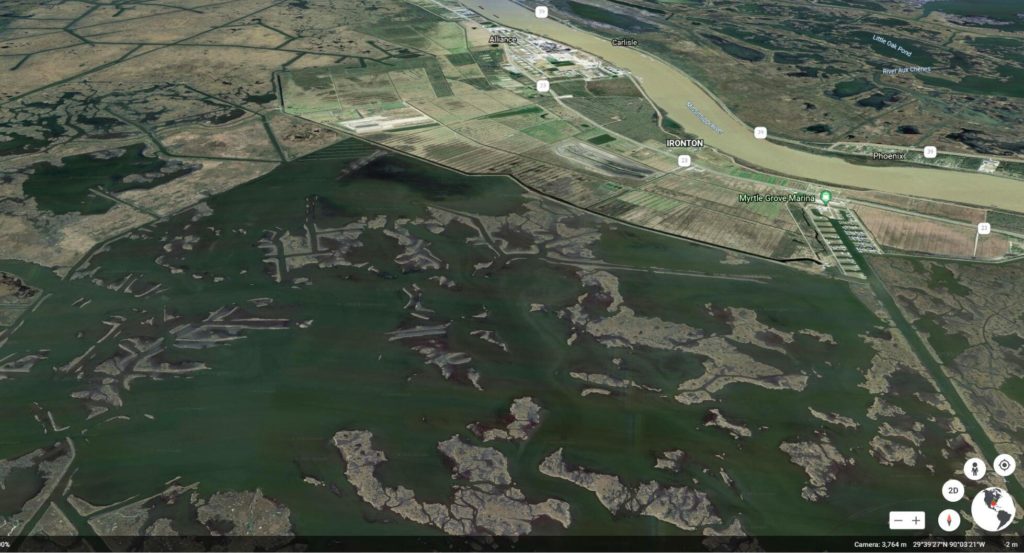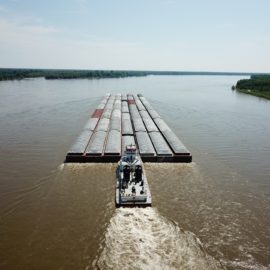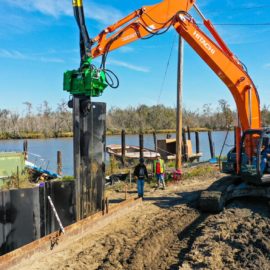
IMAGE FROM GOOGLE EARTH
From the Mid-Barataria Diversion to rebuilding the islands off our coast we have a 50 year $50 Billion project that is based on science and more advanced than most. But do we also need a Plan B?
Twelve years ago Louisiana finally accepted the truth about the mortal damage it had done to its vital bottom third and embarked on a 50-year, $50 billion master plan for coastal survival. That plan has evolved into one of the world’s most advanced science-based climate adaptation efforts, with a list of science and engineering firsts now being exported. But has the time come for the state to start developing a Plan B? This isn’t a call to stop working on the master plan. It’s the idea that when risk is a serious threat to any vital asset — your home, your life — insurance is not an option, it’s a necessity. That’s what a backup plan would be. And, unfortunately, the risks to the master plan presented by accelerating sea level rise caused by fossil fuel emissions have risen to the point that its original promise can no longer be accomplished.
NOLA.com
This thought is not Bob Marshall’s but rather comes from the 2017 edition of the plan by its manager, the state Coastal Protection and Restoration Authority.
To understand how dramatically the challenge has changed you have to remember the exciting promise the original plan held in 2007: If we got all the money and built all the projects on time, by 2067 we would be building more land than we were losing in aggregate to erosion and subsidence. We could maintain large sections of wetlands that powered seafood production and protected human communities and industries. That hope ended in 2017 when the third edition of the plan made this new projection: Even if we get all the money and build all the projects on time by 2067 (just 46 years from now) we will lose at least another 1,200 square miles and as much as 2,800 square miles. How much we lose depends on how quickly nations reduce their emissions — and right now those emissions continue to rise. That sober projection was reinforced this year in the draft environmental impact statement for the Mid-Barataria controlled river sediment diversion. It states that while the project could build 27 square miles of new wetlands by 2050, by 2070 that total would be reduced to 21 miles by the rising Gulf of Mexico. And that loss would continue as the Gulf continues to rise at an ever-accelerating pace — even as the diversion remains operational.
Maybe we need to look at these changes and warnings and rethink what we are both proposing and doing.
Sediment diversions have long been at the heart of our chances for sustaining some kind of delta because it was the only affordable option. Dredging and pumping sediment from river bottoms and offshore locations to raise sinking wetlands is quick and effective, but because it must be repeated every 20 years due to unstoppable subsidence, it is economically unsustainable. The billions for diversions have been justified by the logic they would “continue to build land as long as the river is running.” Now the extent and life span of even those wetlands is in doubt due to emissions. The new Mid-Barataria projections only confirm what we have known since 2017: Unless emissions are tamed, the goal of the master plan will change from sustainability to managed retreat because the Gulf will eventually swallow everything we rebuild long before the end of this century. That doesn’t mean we should stop current rebuilding. Every new acre of wetlands provides some benefit for seafood production and buffering for levees. But we do need to fund studies to determine the cost-benefit of each new effort, so we know their tipping point for diminishing returns.
We need to start planning for a Plan B. Keep the money allotted for the proposed plans in place and work with NGO’s for the funds to study and plan for the changes needed. The warnings are there and we must heed them.



